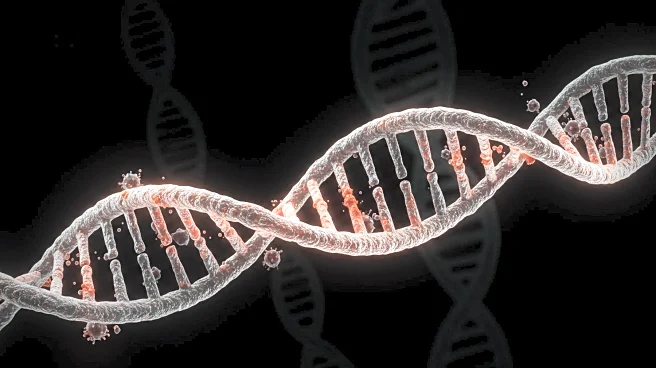What's Happening?
A recent study has revealed that ancient viral DNA, embedded in human genomes, plays a significant role in early human development. These viral remnants, known as transposable elements (TEs), make up about 8% of human DNA and were previously considered 'junk' DNA. The study, published in Science Advances, suggests that TEs are crucial for gene regulation, impacting how genes are turned on and off. Researchers have identified patterns within TEs that could be vital for understanding human evolution and development. The study highlights the potential of TEs in gene therapy and their possible links to human diseases.
Why It's Important?
The findings underscore the importance of understanding the role of TEs in human biology and evolution. By revealing how these ancient viral sequences influence gene expression, the study opens new avenues for research into genetic diseases and therapies. The ability to target functional TEs could lead to advancements in gene therapy, offering potential treatments for various conditions. Additionally, understanding the evolutionary impact of TEs may provide insights into what makes humans unique, aiding in the study of human genetic diseases and evolutionary biology.
What's Next?
Further research is needed to explore the full extent of TEs' roles in human evolution and development. Scientists aim to uncover how these elements contribute to the uniqueness of human biology and their implications in genetic diseases. The study encourages continued investigation into the evolutionary processes involving TEs, potentially leading to novel therapeutic approaches and a deeper understanding of human genetics.
Beyond the Headlines
The study challenges the notion of 'junk' DNA, highlighting the evolutionary significance of viral remnants in human genomes. It suggests that ancient viruses, once perceived as harmful, have been integrated into human DNA, providing raw materials for genetic innovation. This perspective may shift how scientists approach genome research, emphasizing the need to consider the evolutionary history of DNA sequences in understanding human biology.











